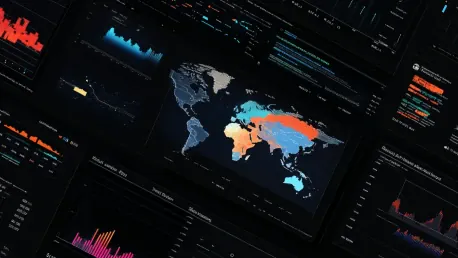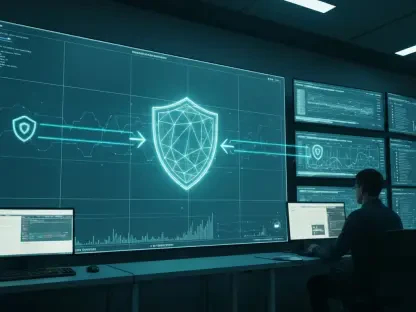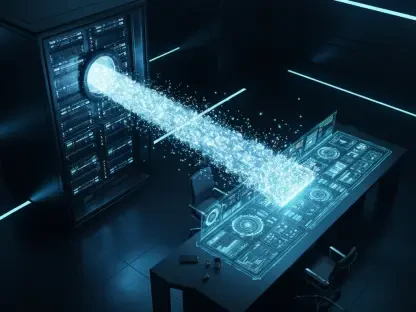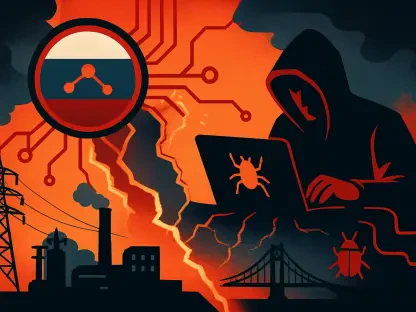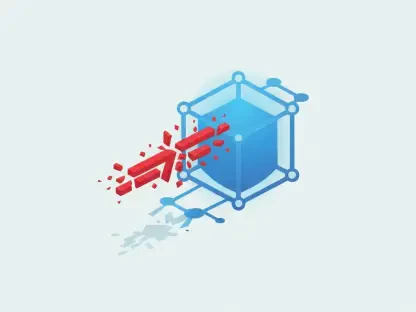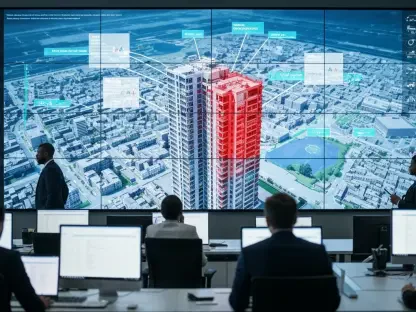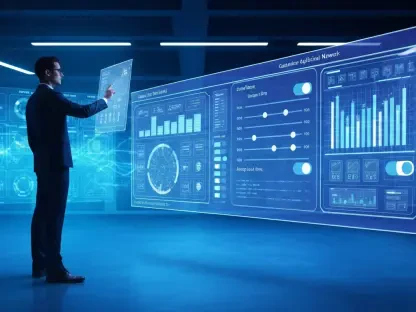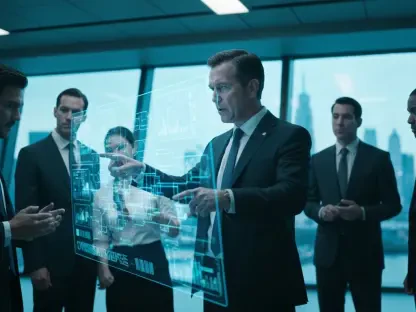Crafting a compelling grant proposal is a critical task for any organization seeking funding. In today’s competitive landscape, the ability to present data effectively can make a significant difference. Advanced data visualization techniques transform raw data into engaging visual stories, enhancing the clarity and impact of proposals.
The Power of Advanced Data Visualization
Transforming Raw Data into Compelling Narratives
Advanced data visualization goes beyond merely presenting numbers. It converts complex information into formats that are easy to understand, making it accessible to stakeholders. This transformation is crucial in grant proposals, where clarity and impact are key to success. By using sophisticated visual techniques, organizations can create compelling narratives that captivate and convince funders.
These visual techniques enable organizations to distill massive amounts of data into cohesive, easy-to-digest formats that make it simpler for stakeholders to grasp essential points. By turning rigorous statistical information into visually appealing narratives, grant proposals become more engaging for readers. When well-executed, these visuals can make a significant difference in the appeal of a grant proposal, transforming dry data into a dynamic story that illustrates the tangible benefits of funding the project.
Bridging Data to Actionable Insights
Data visualization bridges the gap between raw numbers and actionable insights. This capability is particularly beneficial for NGOs, as it allows them to illustrate trends, correlations, and outcomes effectively. For example, a well-designed infographic can visually demonstrate the positive impact of a program over time, linking funding to tangible community improvements in health or education. This visual storytelling approach helps NGOs create a more convincing argument for support.
Visual storytelling is not only about presenting data but also about making data more relatable and easier to comprehend. Through sophisticated graphs and charts, stakeholders are better equipped to see the real-world implications of their funding. For instance, a line chart showing reduced healthcare costs due to a new health initiative can immediately resonate with funders. The ability to connect raw data to real impacts fundamentally shifts the narrative from abstract numbers to meaningful stories, thereby elevating the proposal’s persuasive power.
Choosing the Right Visualization Tools
Advanced Tools for Complex Data
Selecting the right visualization tools is essential for creating effective visuals. Tools like Tableau and Microsoft Power BI are praised for their advanced capabilities. These platforms allow the creation of dynamic dashboards that present real-time data engagingly. They offer flexibility in data manipulation, enabling quick adjustments based on feedback or new findings. For extensive data analysis with multifaceted relationships, these advanced tools are worth the investment.
Platforms such as Tableau and Power BI provide robust features that are crucial for handling complex datasets. These tools offer highly customizable options, allowing users to refine and present data in ways that best suit their audience. With features like interactive dashboards, users can engage with data in real time, exploring various scenarios and deepening their understanding. This capability is particularly useful during presentations where real-time data adjustments might be necessary to address specific questions or concerns from funders.
Simpler Tools for Straightforward Data
For more straightforward data, simpler tools like Canva or Google Charts can be highly effective. These tools are excellent for creating clear and concise visuals that communicate essential information without overwhelming the audience. The choice of tool depends on the complexity of the data and the specific needs of the proposal. Simpler tools are often sufficient for straightforward data, providing a cost-effective solution for creating impactful visuals.
Basic visualization tools are not only more accessible but also easier to learn and implement, making them ideal for NGOs with limited resources or expertise. Canva, for example, offers user-friendly templates that can be quickly customized to fit the specific needs of a proposal. Similarly, Google Charts integrates seamlessly with other Google services, providing a practical option for organizations already using the Google ecosystem. These tools help ensure that the visuals are not just effective but also easy to produce and modify as necessary.
Techniques for Effective Data Visualization
Identifying Core Messages and Key Takeaways
Transforming complex data into compelling visual stories requires understanding the audience’s needs. Identifying the core message and key takeaways guides design choices and helps in selecting the most relevant data points. For instance, in proposing a new educational initiative, an NGO might focus on statistics highlighting gaps in learning outcomes or demographic disparities that the program aims to address.
In essence, the key to effective data visualization lies in the ability to distill complex datasets into clear, easily comprehensible visuals. This process starts with identifying the major talking points that will resonate most with the audience. By honing in on these critical messages, a proposal can be structured in a way that highlights the most impactful data, allowing the narrative to unfold naturally and convincingly. This approach ensures that funders can quickly understand the significance and potential impact of the proposed project.
Utilizing Various Visualization Techniques
Different visualization techniques can be employed to illustrate key points effectively. Charts, graphs, and infographics each have their strengths. A bar graph can compare different groups or time periods, while a pie chart can succinctly display proportions within a whole. Storytelling elements such as annotations or captions add context and enhance understanding, creating a more engaging experience that informs and inspires action.
Choosing the right visualization technique is crucial for effectively communicating complex information. For example, a heatmap can visually represent data distributions over geographic regions, making it easier to identify patterns and trends that might otherwise go unnoticed. Infographics offer a powerful way to tell a story with data, combining text, images, and charts to present a comprehensive overview of a project. By leveraging various techniques, organizations can create a more engaging and informative visual experience that captures the attention of funders.
Enhancing Engagement with Interactive Visuals
The Power of Interactivity
Interactive data visualization enhances engagement and impact. Unlike static visuals, interactive elements allow users to explore data at their own pace, fostering a deeper understanding. An interactive map, for example, could let funders click on specific areas to learn more about local challenges and successes. This engagement encourages stakeholders to invest emotionally in the cause.
The power of interactivity lies in its ability to make data exploration a participatory experience. Instead of passively viewing information, users can actively engage with the content, diving deeper into the aspects that interest them most. This freedom to interact with data empowers stakeholders to gain a more nuanced understanding of the project. Interactive elements can transform a standard presentation into a dynamic, engaging experience that holds funders’ attention and keeps them invested in the proposal.
Tools for Creating Interactive Visuals
Tools like Flourish or Datawrapper enable the creation of visuals that dynamically respond to user input. These tools facilitate real-time feedback during presentations or discussions, making it easier to highlight specific aspects based on audience interest. This adaptability ensures sustained audience engagement and demonstrates an organization’s commitment to transparency and collaboration.
By using platforms like Flourish or Datawrapper, organizations can create tailor-made visual experiences that accommodate the diverse interests of stakeholders. Real-time interactivity allows for agile responses to questions or concerns, making the presentation more compelling and thoroughly validated. This adaptability not only enhances the interactivity but also showcases the organization’s proactive approach to data transparency, helping to build trust and credibility with funders.
Best Practices for Data Visualization
Simplicity and Clarity
Best practices for data visualization are crucial to ensuring clarity and comprehension. Simplicity should be a guiding principle, avoiding cluttered visuals that can detract from the main message. Strategic use of whitespace provides breathing room around visuals, and carefully considered color choices enhance understanding without causing confusion. Consistent color palettes help differentiate categories while maintaining visual harmony.
Clarity is essential for effective data communication. Simple, clean visuals are often more impactful than complex, cluttered ones. Using whitespace strategically can help separate different sections of a visual, making it easier for viewers to follow the narrative. Thoughtful color selection can highlight key points without overwhelming the viewer. By adhering to these principles, organizations can make their data presentations more understandable and persuasive, ultimately enhancing their grant proposals’ overall impact.
Clear Labeling and Context
Clear labeling of axes and provision of legends where necessary ensure accurate data interpretation. By adhering to these best practices, NGOs can create visuals that are both aesthetically pleasing and easy to understand. This clarity is essential in persuading funders of the project’s value, making advanced data visualization a powerful asset.
Providing context through clear labeling and legends is vital for data accuracy and credibility. Labeled axes and detailed legends can guide viewers through the data, helping them to interpret the information correctly. This precision in presentation not only enhances the aesthetic appeal of the visuals but also builds the proposal’s persuasive power by ensuring that stakeholders fully comprehend the data being presented.
Building Credibility Through Visual Storytelling
Combining Emotional Narratives with Hard Data
Using advanced data visualization allows organizations to build credibility through visual storytelling. For an NGO focused on environmental conservation, for example, visuals depicting changes in biodiversity over time can powerfully illustrate the urgency of their work. Combining emotional narratives with hard data creates a compelling case that resonates with funders on both intellectual and emotional levels.
Emotional narratives, when combined with robust data, can make a significant impact on funders. By showing not just the numbers but also the real-world implications behind those numbers, organizations can create a more compelling story. Visuals that depict the urgency of an issue, such as drastic drops in species population or severe deforestation, can evoke a strong emotional response from stakeholders. This blend of hard data and emotional appeal is key in making a persuasive argument for funding.
Demonstrating Impact and Urgency
Crafting an effective grant proposal is essential for any organization seeking financial support. The current competitive environment requires a clear and powerful presentation to stand out. To make your proposal compelling, it’s crucial to present your data in an accessible and engaging manner. This is where advanced data visualization techniques come into play. Instead of overwhelming your audience with raw numbers, using charts, graphs, and interactive visuals can transform this data into a captivating story. Visual representations make complex information more digestible and highlight key points effectively, thereby enhancing the clarity and impact of your proposal. By leveraging these techniques, you not only present a professional and sophisticated proposal but also significantly increase your chances of securing the desired funding. Thus, mastering data visualization can be a game-changer in the quest for financial backing, providing your proposal with the compelling edge needed to succeed in securing grants in today’s competitive landscape.
